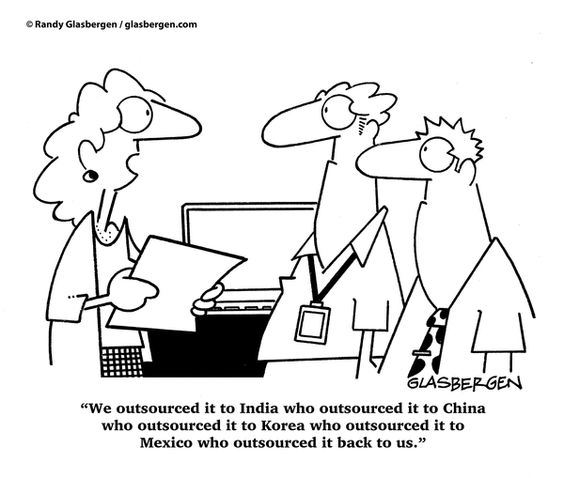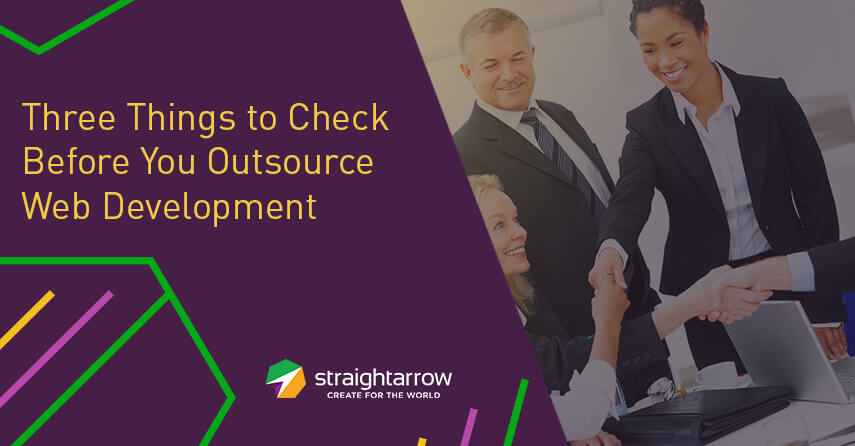
In an earlier article, we discussed the three factors that you should consider when looking for outsourcing vendors: reviewing their track record, gauging their communication skills and tools, and examining their IT certifications and infrastructure.
In this installment, we’ll be discussing three more elements to consider. This may seem like a long list, but the best insurance against a failed outsourcing venture is preparation. To have a good working relationship with an outsourcing provider, align your expectations with the standards listed below.
Cost-benefit balance
Before making your choice, make a list of all the internal processes you are thinking of outsourcing and the costs they incur, such as overhead pay, power, technology, and the like. Then, before the provider gives you an estimate of their services, provide your own tally of your expenses for these processes. Do a few tallies, changing the number of processes outsourced or the vendor being considered, and see the best use of your budget.
There are three scenarios here: the vendor offers a lower price, matches yours, or quotes a higher price.
If they match your price, look for added value in other aspects, like a faster rate of completion, free hours on a project, more resources for the same price, or a streamlined process that can adapt to your company. If the provider can’t give this, you might want to look for another one.
If a vendor charges steeply, research on their track record should help you judge if they’re justified in doing so. Have they had big clients in your industry? How long have they been in business? If you feel that the price is too steep, however, you can opt out of some of the services that they offer to lessen costs, instead of rejecting them altogether. Good business process outsourcing companies are highly flexible with their packages.
More often than not, vendors will offer more affordable rates than your overhead costs. Offshore outsourcing providers in Asia are usually cheaper. It may be tempting to say yes immediately, but don’t! Ask if they are the primary outsourcing provider and if they have all the facilities to accommodate all of the processes you’d assign to them. It’s a common practice for outsourcing providers to also outsource the projects they get. It sounds like one very deep rabbit hole, but they do this to maintain your processes’ integrity by eliminating weak links in their outsourcing solutions. For example, according to an outsourcing checklist, IT companies often outsource Quality Assurance and bug testing processes to other companies to prevent narrow-sightedness and bias. Remember, though, that the farther your process strays from the initial outsourcing company, the more vulnerable it is to cyber attacks (which is why, as we said in the first installment, infrastructure certification is important).

In short, no matter how the vendor’s prices compares to your costs—higher, lower, same—you should take time to comprehensively analyse their cost-benefit ratio. Better safe than broke!
Location and work hours
You may be thinking, “Wait a minute. You said in the last entry that as long as communication is great, it doesn’t matter what country they reside in.” Yes, excellent communication is a factor, but people can’t communicate with you when they’re asleep.
Not all outsourcing companies offer 24/7 support. If your processes need a follow-the-sun schedule like customer support, software development, and project management, you need to consider a provider that has a workforce with multiple shifts to manage time zone difference. If you’re working on something that doesn’t require that kind of activity, like non-real-time virtual assistance or image design, you can clarify that with your provider on the onset of your deal.

Companies with 24/7 coverage are usually expensive because they have to shoulder more costs like night differentials and meal and transportation allowances. However, the added value of work-hours is on-call capabilities. Prepare to pay premium, but if your processes need it, every penny allocated is going to be well spent.
Human Resource Development and Employee Satisfaction
A company would mean nothing without its people. If employees are dissatisfied with management, it should show in their work. There’s a difference in being great and staying great; it’s best to ask the vendor about the finer details of their retention rates and company culture.
In one study by Sempagne, Rieger, & Roodt (2002), they found that there is a positive correlation between job satisfaction and company culture; this means that the more employees enjoy their culture, the more they are satisfied with their job. In another study by Khan et. al (2012), it was found that more satisfied employees are more likely to perform better. Happier employees mean better output for your business.

A higher retention rate also means that their employees are less likely to leave in the middle of the project; mid-year resignations are a pain to deal with. Imagine an IT professional resigning in the middle of bug-testing. Sure, the company could replace that person, but the time lost because of transitions could push back your launch date by a few days. If you had a deadline to meet, that would spell disaster.
The company’s investment to training is also an essential thing to consider. According to a journal by Debra Truitt entitled, “The Effect of Training and Development on Employee Attitude as it Relates to Training and Work Proficiency”:
...it seems clear that because training is seen to be so important in forming positive attitudes that it may further lead to job proficiency, and not receiving adequate training is associated with a feeling of reduced competency, it seems very reasonable to predict that poor training could result in poor attitudes about performance, which then could lead to poor performance (2014, para. 50).
Find a company that takes care of its people, and you’ll see an investment that pays for itself. Ask them about their company events and how often employees are sent on training. If they have an employee satisfaction scale, request it and see for yourself if you’re working with people who have dedicated hearts and capable minds.
Opportunity for long-term partnership
One thing to look for when dealing with businesses should be longevity. Time is a resource that is rife with possibilities; they say that beauty takes time, right?

Try to see if a provider can commit to a long-term partnership when looking for an outsourcing provider. There are many advantages to a long, comfortable working relationship. For one, they become more familiar with your processes and even your company’s top-management preferences when it comes to service. This familiarity means they can tailor-fit communication and service packages with even more accuracy.
Long-term partnerships also offer investment to both parties’ goals. Short-term deals only focuses on the now; the immediate demands that you ask from the outsourcing company. They don’t see the bigger picture in your future plans, which cause even more revisions or work redundancies when you aren’t satisfied with their output and may eventually fatigue both sides. If the outsourcing vendor you’re talking to isn’t concerned with a long-term partnership, you might want to consider taking a second opinion.
These are just additional tips to help you zero in on the best outsourcing vendor for your company. Look at these standards and use them as a guide, but don’t forget the other hidden variable: your business instinct. Netflix CEO Reed Hastings starts with intensive data-gathering, but in the end, trusted his gut feelings. Make sure to take your instinct and these standards in tandem when deciding something as big as hiring an outsourcing provider.
Still have a few burning questions about outsourcing? Click the button below to book a free, no-obligation consultation with us.













Comments